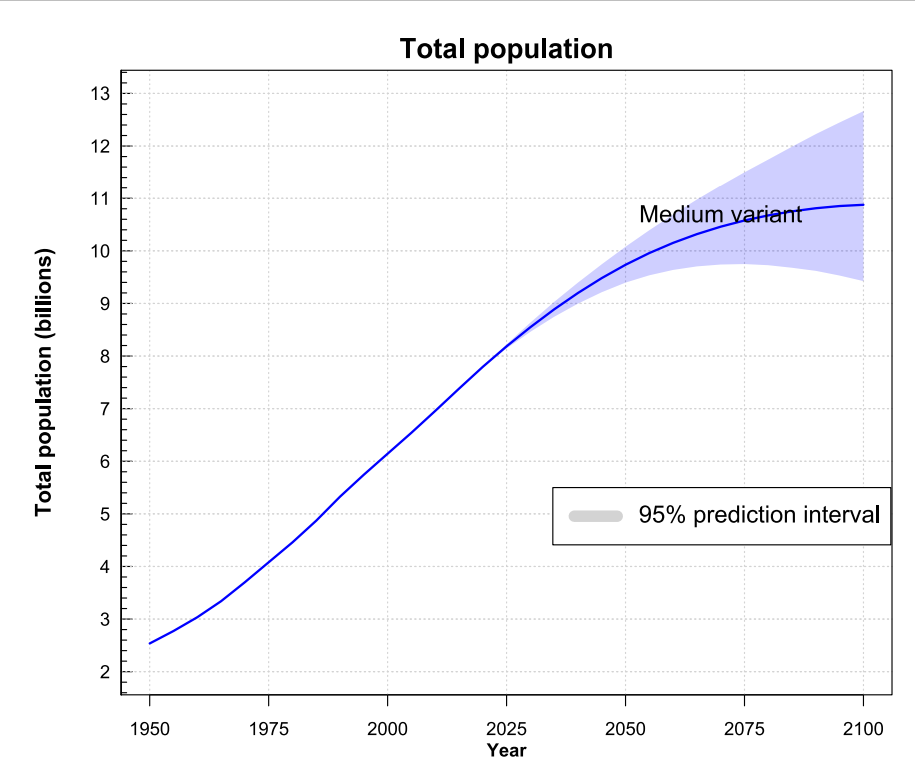Overpopulation: Future or Fiction?
Author: Angelica Hill

Within the last century, overpopulation has become a recurring theme of dystopian literature; Harry Harrison’s novel Make Room! Make Room!, adapted into the film Soylent Green, warned that cannibalism would be needed to feed the growing population, while the movie Blade Runner depicts migration to “off-world” colonies to ease the burden on Earth. With its prevalence in science fiction, overpopulation seems inevitable, but is it truly in our future?
Looking at the population boom in the twentieth century, it certainly seems possible. In a little under a hundred years, the global population quadrupled from 2 billion in 1928 to 7.9 billion in 2021. However, the United Nations estimates a global population of 11 billion in 2100 (Figure 1) with a growth rate of 0.1% per year, a massive slow-down in population growth when compared with that of the twentieth century, which ranged from 1% to 2%. This would effectively create a plateau, where humans would procreate at replacement rates, approximately 2.1 children born per woman, and cause the population to stagnate and eventually decrease. Signs of this can be seen even today. The three most populous countries, China, India, and the United States, have seen declining fertility rates in recent years. While it is predicted that the population growth will stabilize, there is still the question of how many people Earth can support, or its “carrying capacity”.
Some researchers estimate the capacity to be somewhere between 9 billion and 10 billion people, while others say it could be as large as 64 billion. Any number could be correct, but a major determining factor is standard of living. If the Earth were able to support 64 billion people, their collective standard of living would be rather low, as they would likely face shortages of natural and manmade resources while also dealing with crowded living conditions. It is estimated that Earth can support 2 billion people living like a middle-class American, who consume 3.3 times more food and 250 times more clean water than subsistence levels. At the same time, there has been recent unprecedented growth in sustainable energy and environmentally friendly technology, which could increase the carrying capacity and allow for a better standard of living.
Ultimately, overpopulation is a bit fiction, but also a bit of our future. Even as the population increases, it is unlikely that the humans will live in the crowded, make-shift skyscraper “stacks” of Ready Player One or be forcefully euthanized à la Logan’s Run. However, the world’s current consumption and waste habits are unsustainable. Vital resources such as fossil fuels, arable land, and clean water at a premium, and climate change only exacerbates matters. Without continual developments in renewable energy and sustainability technology, overpopulation fiction could very soon become our future.
References: